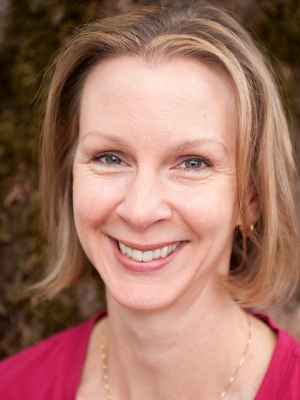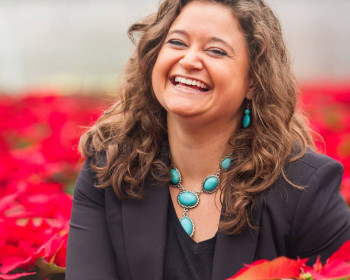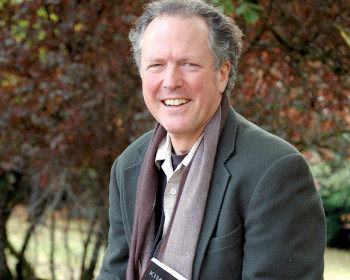Alumna advocates for “constructive wallowing” in new book
Open gallery

Counselor and self-help author Tina Gilbertson (MA in Professional Mental Health Counseling—Addictions ‘07) has done everything from screen acting to developing a new approach to psychotherapy. Her first book, Constructive Wallowing: How to Beat Bad Feeling by Letting Yourself Have Them, will be published in May 2013.
In 1988, she launched a decade-long acting career by performing for two years at the Barnett Drama Centre in London. After that, she traveled to Vancouver, B.C., Los Angeles and New York to work in film and television. She co-starred in “Live Bait,” a Toronto International Film Festival award winner, and appeared in an episode of The X-Files.
After going through counseling and making significant life changes, Gilbertson decided on a career as a mental health counselor. She moved to Portland in 2003 to be closer to family in Vancouver, and chose Lewis & Clark’s Graduate School of Education & Counseling for its reputation in the community. Through her self-help practice, she created the 360-degree program and the concept of “constructive wallowing,” or allowing yourself to experience bad feelings. She teaches workshops on self-esteem and decision-making.
How did you start your acting career?
I was living in London from 1988 to 1990 and I was part of a community theater group. I took acting classes when I got back home to Vancouver, B.C. Eventually, I got a part in episode ten of The X-Files. Back then nobody knew what it was. They would say “the what files?” It was just a little part but exciting to get. I moved to Los Angeles in 1994, but I hated L.A. I moved to New York in 1995, and there I did a couple of commercials and film parts.
What satisfaction were you looking for that you couldn’t find in the world of acting and television in New York City?
I realized after years of acting that I wasn’t called to be an actor. I wanted a job that doesn’t feel like work, where I don’t have to put on a uniform. I wanted to feel like work was play. When I got into therapy I felt excited and comfortable. I was paying it forward by listening to my friends. I had finally found my calling.
How did you use your acting skills to transition into counseling?
Storytelling is a great teaching tool, and it’s even better when you can tell a story in an engaging way. I bring my acting skills to this task whenever I’m teaching a workshop or class.
How did Lewis & Clark influence the principles of your self-help practice?
When I started to research counseling programs, Lewis & Clark just stood out to me. I was impressed from the minute I called to ask questions. The person who answered was great. My questions were unique to my situation and she answered them like a pro.
In my first semester, a counseling theories course helped me formulate my conception of how people change and how I can help them change. I found myself drawn to an integrated approach based on person-centered counseling. That theory made a lot of sense to me, along with psychoanalysis and attachment theory. I got a great education that serves as the foundation for what I’m doing.
Can you describe the process of creating a private practice?
I had not planned to go into private practice immediately after school. I worked at a nonprofit for a while, but I preferred private practice. I just wanted to help people change on an internal level. I wanted to work with people who were already functioning but who wanted to live an optimal life. I started offering topics in classes that I was interested in. Emotions 101, one of my first classes, influenced Constructive Wallowing. It’s at the core of everything I do, this notion that you just have to accept where you are. You can’t be authentic if you can’t feel honest about yourself and how you feel.
How did you develop the idea of constructive wallowing?
I’m not an academic or a researcher. I started as a client, so I’m coming from a real experiential place. I didn’t draw on Eastern philosophy because I’m not from that tradition. The idea of mindfulness certainly comes into constructive wallowing, but I wanted people to go a step further than simply noticing. Take a minute to stop what you’re doing and label your emotions. After exchanging harsh words on the phone, you might say to yourself, “I regret how I handled that. I’m afraid for our relationship now.” Rather than making you feel worse, this intentional experiencing of your emotions will clear your head so you have room to both pay attention and make a good decision about what to do next.
Between classes, counseling, and writing, how do you keep your energy up and practice the self-help principles you teach?
When you get up in the morning and all you’re going to do that day is stuff that lights you up, that’s exciting. In my self-help practice, I get to do what I want when I want.
Learn more about Counseling Psychology programs at Lewis & Clark. Read about Tina Gilbertson.
Caleb Diehl ‘16 contributed to this story.
Graduate Communications is located in room 205 of Rogers Hall on the Graduate Campus.
voice 503-768-6054
fax 503-768-6053
Graduate Communications
Lewis & Clark
615 S. Palatine Hill Road
Portland OR 97219

